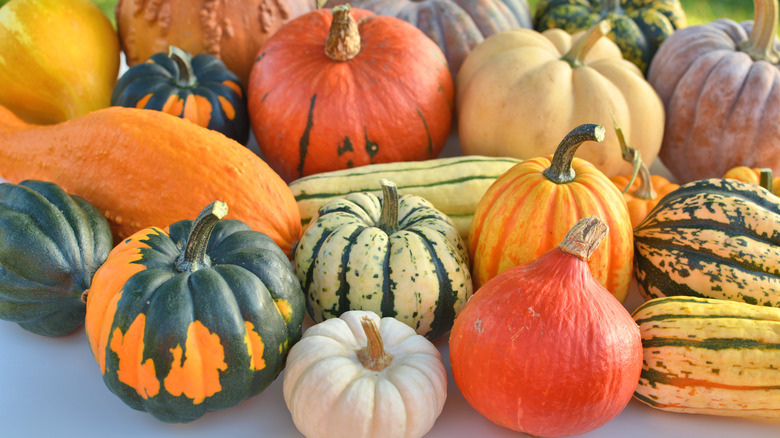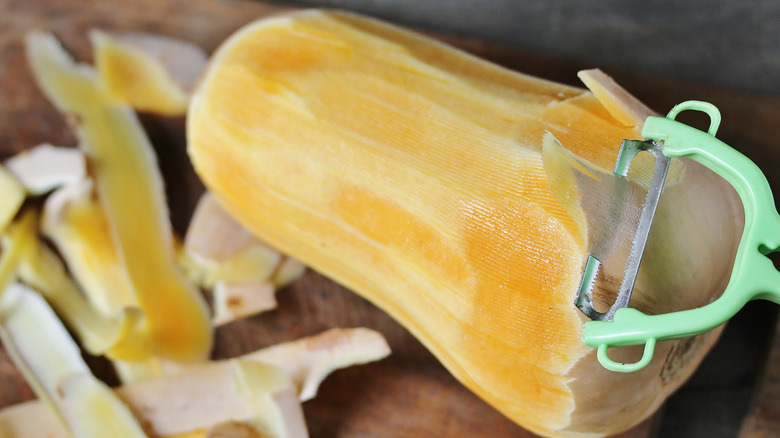The Best Type Of Vegetable Peeler For Gourds
We may receive a commission on purchases made from links.
If the thought of peeling a gourd has honestly never occurred to you — if you didn't even believe it was possible — then you're probably thinking of the kind of decorative dried gourds that start appearing in the stores in fall. Dried gourds can also be turned into ocarinas, while certain tribes in Papua, New Guinea have even adapted them for use as a traditional garment. One thing you cannot do with dried gourds, though, is eat them, nor can they be peeled. A more informal use of the term "gourd" is as a synonym for various types of hard-shelled winter squashes, however, while sometimes the term is even applied to any type of squash. For squash-peeling purposes, the best peeler to use is a Y-shaped one.
A Y-shaped peeler, as opposed to the standard straight kind, has a horizontal blade in place of the vertical one. The blade stretches between the two arms of the "Y" so it does not block the view of the vegetable you're peeling, which allows you to better navigate all of its lumps and bumps (something gourds are very prone to). As one Amazon reviewer describes the Y-shaped Kuhn Rikon original Swiss peeler, it "does that trick quick and smoothly, even on veggies with weird skins like pumpkins and gourds." While the polka-dot patterned peeler they reviewed is no longer available, Amazon still sells plenty of solid-color Kuhn Rikon Swiss peelers for as little as $5, while numerous other kitchen supply brands offer similar tools.
What type of gourds need peeling?
Once you've acquired your Y peeler, you may be inclined to try it out on a gourd (or squash, if you prefer the more technically accurate term) to see if it's everything we promised. Not all varieties need peeling, however, particularly the thinner-skinned ones. Being thin-skinned isn't so great if you're human since it means you're prone to get your feelings hurt, but when it comes to a tasty acorn squash or honey nut squash, it simply means that cooking softens the skin to the point where it's just as edible as the flesh. Thicker-skinned squash, however, which are typically the larger varieties, can benefit from a good peeling before you cook them.
Butternut, kabocha, and kuri, in particular, are all types of winter squash where eating the skin may not be so a-peel-ing, while you may need to peel a raw pumpkin, as well. Pumpkin intended for baked goods can be hand-peeled after it's cooked, but if you're planning to add this gourd to a dish such as our Moroccan pumpkin stew, you'll be peeling it raw and then chopping it in chunks. If such a stew sounds good to you, Y not get a Y-shaped peeler?

